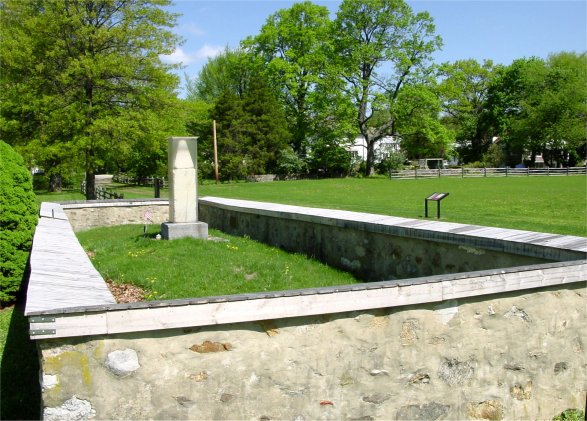
The Paoli "Massacre" Part 3
September 20-21, 1777

5) Route Blocked
This is the view from the second fence gap - where the Sugartown Road passes through, and where the artillery piece blocked the retreat. As you can see, even in daylight, the area of the camp is blocked from view. In the distance you can make out the first gap in the right center of the field. At the time, another road - with fences on either side - lead from here toward the first fence gap. The road did not extend all the way to the fence gap, but turned right at an intermediary fenceline not shown here. Wayne's men hastily fell back along this road.
To cover the retreat, the 4th Pa was ordered into the woods on the left of the picture on the opposite side of the road near the two modern white houses. For a short time the 4th fired on the attacking British, and they also gave their comrades more room to escape.

6) The Escape
Through the gaps in the fences, Wayne's men spread out in this open field as they continued to flee. The British pursued, and attempts to rally the Americans failed. When the survivors met the Maryland militia about a mile distant, they too were infected by the panic. The British suffered just six dead and 22 wounded. Fifty three Americans were buried on the field, and the British took 70 prisoners while leaving behind 40 badly wounded. The lack of consistent quarter and the atrocities committed after the battle led the attack to be labelled a massacre. As bad as it was, it could have been much worse. Since Grey had taken the eastern road, Musgrave never got into action, and the American retreat wasn't cut off. That is all that prevented capture of most of the division.

Burial Mound
Fifty two of the American killed were buried here along the Sugartown Road. In the 1800s, the area was walled, and a monument was erected. In 1999, 40 acres of the battle area were preserved by a variety of organizations and individuals. We owe a debt of gratitude not only to the men who died here, but to those who have preserved the battlefield.
A source of myth for many years, the battle is much better understood now because of the research of Thomas J McGuire who used recently found court martial records and pension applications to piece together the events of the battle. He shares his understanding of the events in "The Battle of Paoli" released in 2000, a masterpiece of research and writing.
Back to Revolutionary War Virtual Battlefield Tours